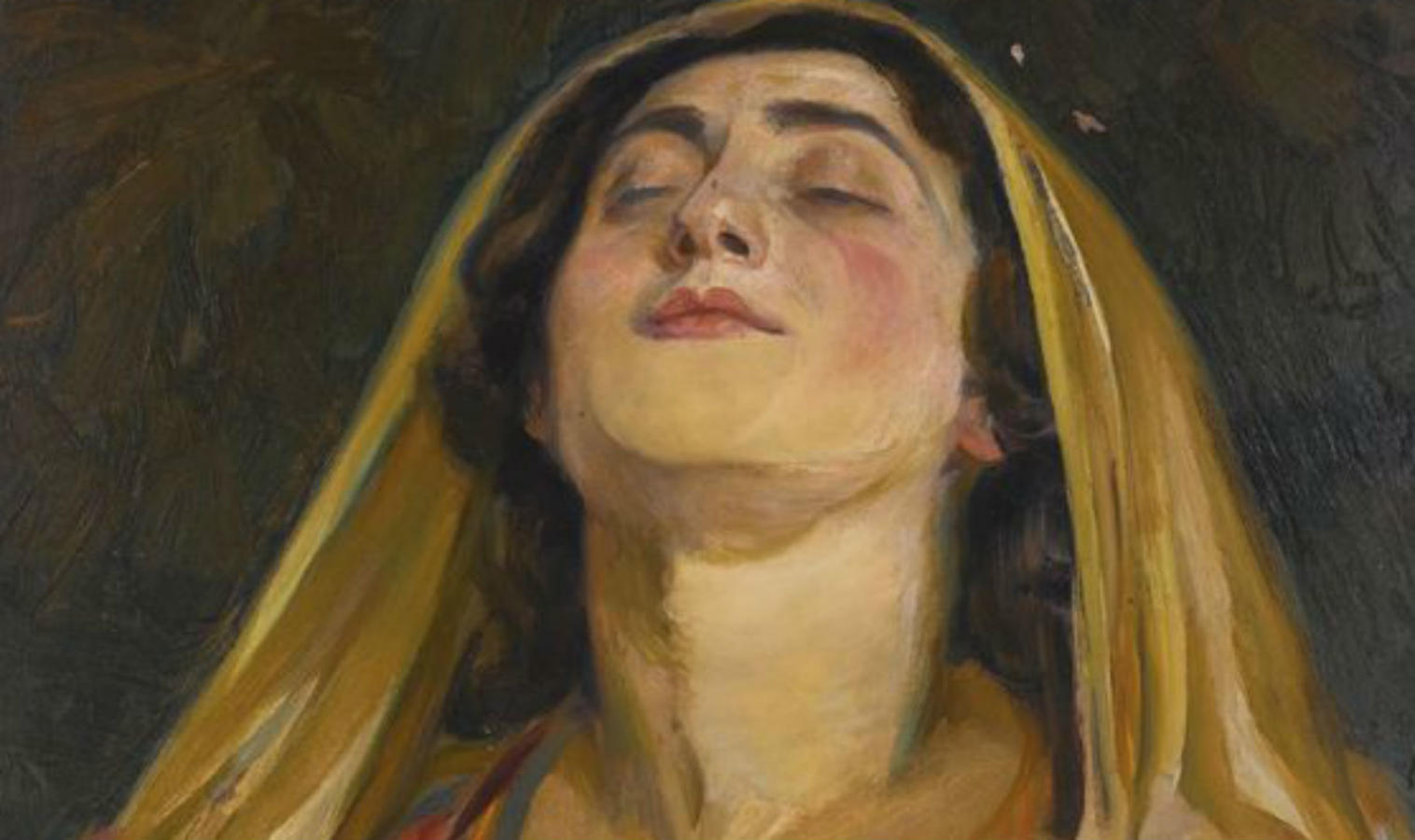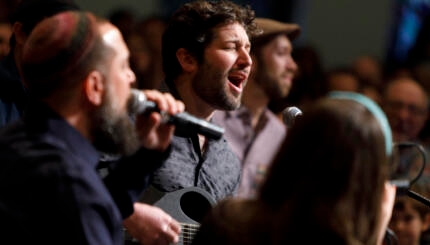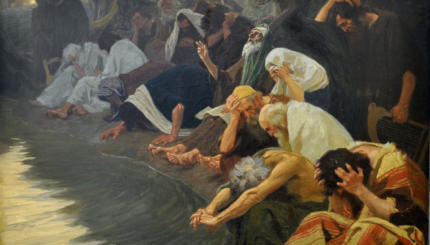To pray without being fully present is highly problematic for rabbinic Judaism. A recurring talmudic controversy rages about the extent to which commandments in general and prayer in particular require kavvanah, the intentionality and attention with which a fully aware and situated self orients itself toward God and performs a holy act.
Kavvanah is both internally and externally manifested. It is both a proper frame of mind and a proper demeanor.
The Biblical Story
The biblical narrative that exemplifies for the rabbis the kavvanah with which their own liturgy ought to be prayed occurs in the first chapter of 1 Samuel. Surprisingly, this paradigmatic prayer is articulated by a woman. Hannah, a pilgrim at the Shilo sanctuary, prays there silently and desperately for a child. The High Priest Eli scolds her, mistaking her voiceless prayer for the ravings of a drunk. “No my lord,” she replies. “I am a tormented woman. I have drunk no wine or other strong drink, but I have been pouring out my heart to God.”
Reproved, Eli blesses her. God answers Hannah’s prayer and she becomes the mother of the prophet Samuel.

Help us keep Jewish knowledge accessible to millions of people around the world.
Your donation to My Jewish Learning fuels endless journeys of Jewish discovery. With your help, My Jewish Learning can continue to provide nonstop opportunities for learning, connection and growth.
Why Hannah?
It is this story that the rabbis of the Talmud select to illustrate the laws of the Amidah, which they call ha-tefillah, “the Prayer.” But why this story? Why should Hannah be acclaimed as the originator of prayer when she is not the first character in the Bible either to entreat or to thank God? It is because only the Hannah narrative addresses the particular concerns of the rabbis about the nature and authenticity of rabbinic prayer.
This narrative is the only instance recorded in the Bible in which a private individual prays in a sanctuary where sacrifices are offered. As such, it affirms for rabbinic Judaism its own continuity with tradition, the continuity between prayer and sacrifice, ritual word and ritual deed, between the synagogue liturgies and the ancient rites of Tabernacle and Temple.
In the person of Hannah confronting the High Priest Eli, moreover, rabbinic Judaism confronts the Judaism of the Temple cult. To the imagined priestly challenge “Do you call this unprecedented behavior worship? Isn’t this sacrilege?” rabbinic Judaism responds with its exegesis on Hannah’s defiant “No, my lord.”
“Ulla or, as some say, Rabbi Yose ben Hanina, said [that Hannah’s words mean:], ‘You are no lord [no authority] in this matter and the holy spirit does not rest upon you'” (Babylonian Talmud, Berakhot 31b).
Excerpted with permission from Engendering Judaism: An Inclusive Theology and Ethics (Jewish Publication Society).
Talmud
Pronounced: TALL-mud, Origin: Hebrew, the set of teachings and commentaries on the Torah that form the basis for Jewish law. Comprised of the Mishnah and the Gemara, it contains the opinions of thousands of rabbis from different periods in Jewish history.

Help us keep Jewish knowledge accessible to millions of people around the world.
Your donation to My Jewish Learning fuels endless journeys of Jewish discovery. With your help, My Jewish Learning can continue to provide nonstop opportunities for learning, connection and growth.



